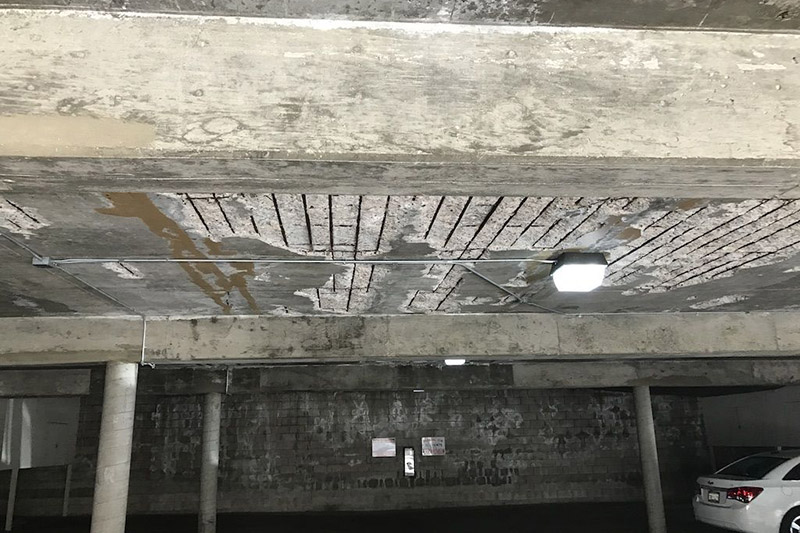What Is Concrete Spalling—And Does It Affect Your Home’s Foundation?

If you’ve ever walked past a crumbling sidewalk or noticed flaking concrete on your porch steps, you’ve seen spalling firsthand. But when it starts happening on your home’s foundation, it’s not just cosmetic—it’s a red flag.
Concrete spalling is one of those issues that sneaks up on homeowners. It doesn’t look catastrophic at first. But under the surface, it could be signaling bigger problems with your foundation, water management, or even your home’s overall structural integrity.
Let’s walk through what spalling actually is, why it matters, how to spot it, and what you can do to prevent long-term damage.
First Things First: What Exactly Is Concrete Spalling?
Spalling happens when the surface of concrete starts to peel, flake, or crumble away. The texture can look patchy or pitted, and the area might feel rough or sound hollow when you knock on it. In some cases, you’ll even see exposed steel reinforcement (called rebar) peeking through the damaged surface.
The real problem isn’t just that the concrete looks bad—it’s that spalling means something has compromised the internal structure. Usually, water has seeped in and started causing internal pressure, freezing and thawing, or corroding the rebar inside.
If your foundation is spalling, it could mean the concrete is weakening, and that’s where things get serious.
Why Does Concrete Spalling Happen?
Spalling doesn’t occur overnight. It’s the result of a combination of factors that wear down your concrete over time:
- Moisture infiltration: Water is the number one culprit. It gets into cracks, freezes, and causes expansion that breaks the surface apart.
- Rebar corrosion: When reinforcing steel rusts, it expands, causing internal cracking and surface breakage.
- Poor installation: A subpar concrete mix or incorrect curing process can make your concrete more vulnerable.
- Chemicals and salts: Common deicing products can accelerate surface deterioration.
- Age and wear: Over decades, exposure to the elements just takes its toll.
In other words, spalling is often a symptom of a larger issue, like inadequate waterproofing, poor drainage, or outdated construction methods.
Why Spalling Is More Than a Cosmetic Issue
We get it—it’s tempting to shrug off a few flaking patches on a walkway or basement wall. But if spalling is happening on your foundation, it could mean the structural integrity of your home is at risk.
Here’s how it can spiral:
- Spalling exposes rebar, which corrodes and expands.
- This causes cracks to deepen and widen.
- More moisture gets in, causing even more damage.
- Eventually, the entire foundation footing or wall may shift, weaken, or collapse in sections.
It’s not just about keeping things pretty. It’s about keeping your home upright.
Signs of Foundation Spalling to Look For
Wondering if what you’re seeing is actually spalling? Check for these warning signs:
- Chipping or flaking concrete near the base of your home
- Rust-colored streaks (a sign of corroding rebar)
- Small craters or pitted areas, especially near downspouts or sprinklers
- Cracks that seem to be growing or spreading
- A hollow sound when you tap the concrete with a metal tool
Also keep an eye out for related issues like water stains, musty smells in the basement, or uneven floors—they could point to a foundation problem tied to spalling.
How Concrete Spalling Affects the Health of Your Home
Spalling doesn’t always stop at the surface. Left unaddressed, it can lead to:
- Structural instability: Weakened footings or walls lose their load-bearing strength.
- Water intrusion: Damaged areas invite even more moisture into basements or crawl spaces.
- Mold growth: Damp, broken concrete is the perfect place for mold to flourish.
- Foundation shifting: Severe damage can lead to movement that affects the entire home.
If your home sits in an area with clay-heavy soil, seasonal rainfall, or seismic activity (hello, Southern California), you’re especially vulnerable.
How Is Concrete Spalling Repaired?
The good news? Concrete spalling repair is both possible and effective. The earlier you catch it, the simpler (and cheaper) the solution.
Typical Repair Methods Include:
- Surface patching: For shallow spalls, pros use bonding agents and repair mortars to resurface the area.
- Rebar treatment: If steel is exposed, it must be cleaned, treated with corrosion inhibitors, and fully embedded in new concrete.
- Structural replacement: In severe cases, a portion of the wall or footing may need to be removed and rebuilt.
It all depends on the depth and spread of the damage. That’s why a professional inspection is crucial.
Can You Prevent Concrete Spalling?
Yes—and prevention often costs less than repair. Here’s what you can do:
- Seal your concrete every few years to keep moisture out.
- Fix drainage problems, like clogged gutters or poor grading, to direct water away from the foundation.
- Avoid harsh deicing salts, especially near the foundation.
- Watch for early signs of cracking or surface change—catching it early means faster fixes.
If you’ve had foundation repairs before, keep up with routine maintenance to avoid recurrence.
When to Call a Foundation Specialist
You don’t need to panic over every flake of concrete. But if you’re seeing signs of progressive damage—or if the spalling is near a load-bearing wall—it’s time to bring in the pros.
A licensed concrete repair contractor will assess whether the damage is isolated or if it signals deeper foundation issues. They’ll also help you determine the best fix for your structure, budget, and long-term goals.
Final Thoughts: Don’t Ignore Spalling
Concrete spalling is more than an eyesore—it’s a sign that something’s not right. Fortunately, when caught early, it’s highly treatable.
If you’re seeing signs of spalling foundation damage, don’t wait for it to spread. Call a trusted foundation expert or connect with our Los Angeles foundation repair specialists and get ahead of it. Your home (and your wallet) will thank you.
Call us today to schedule an inspection or request an estimate




